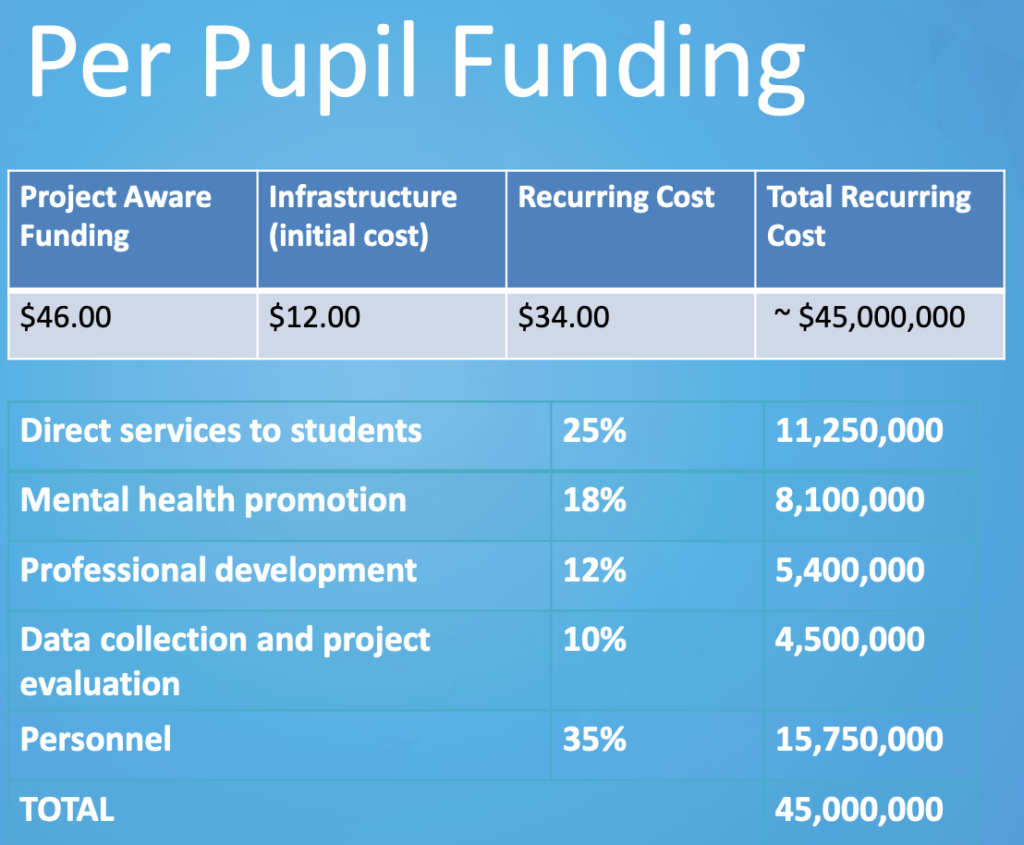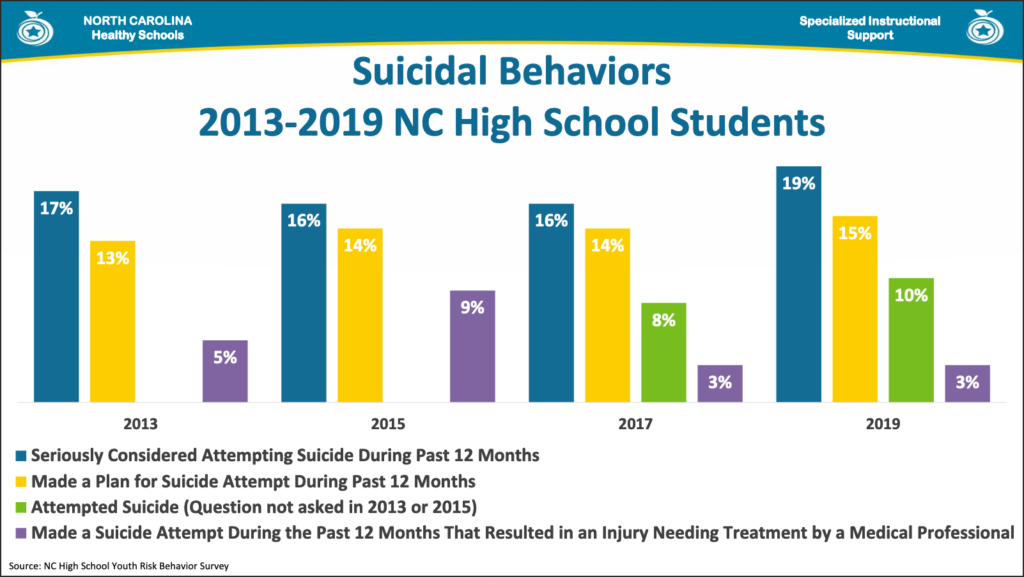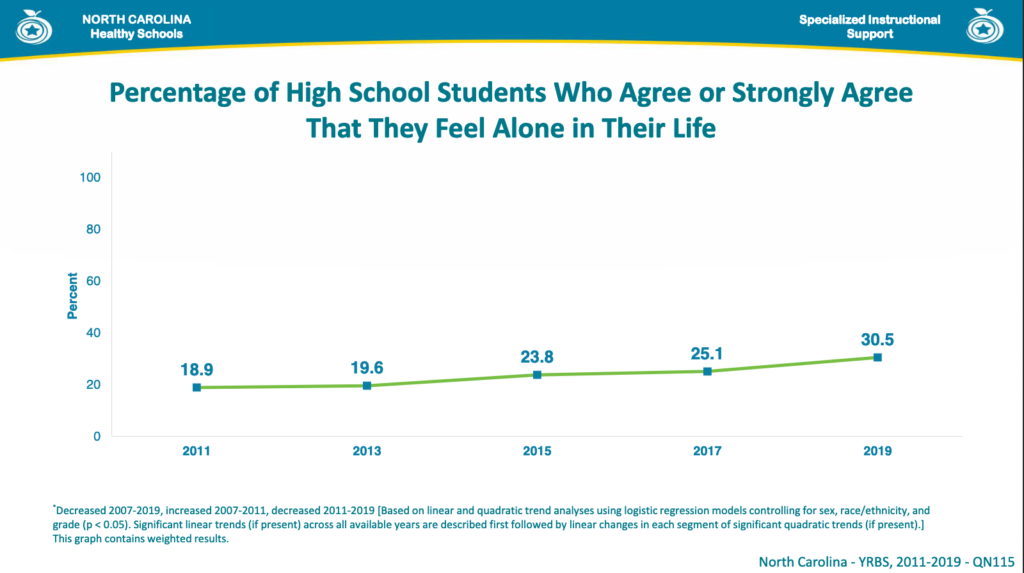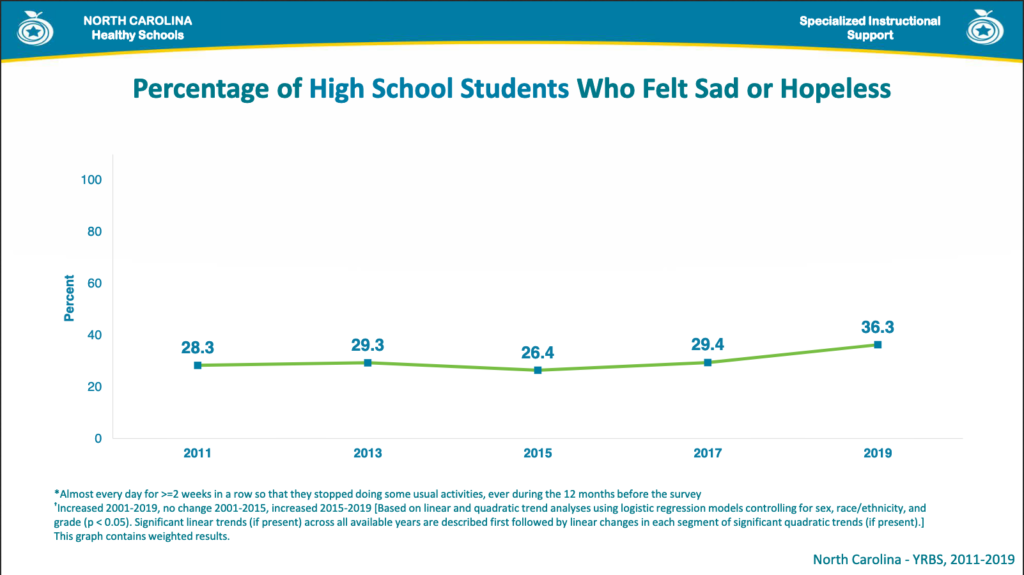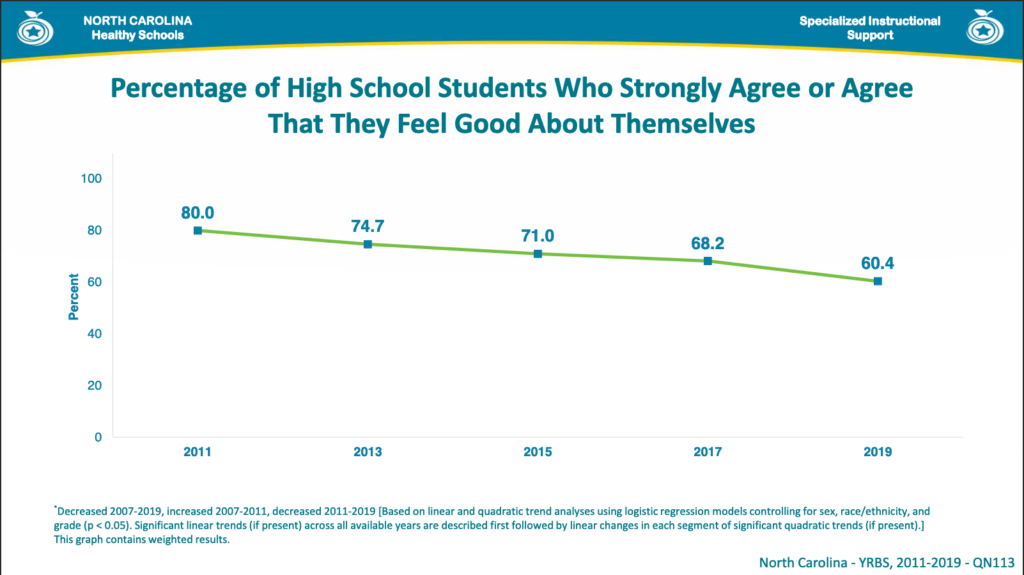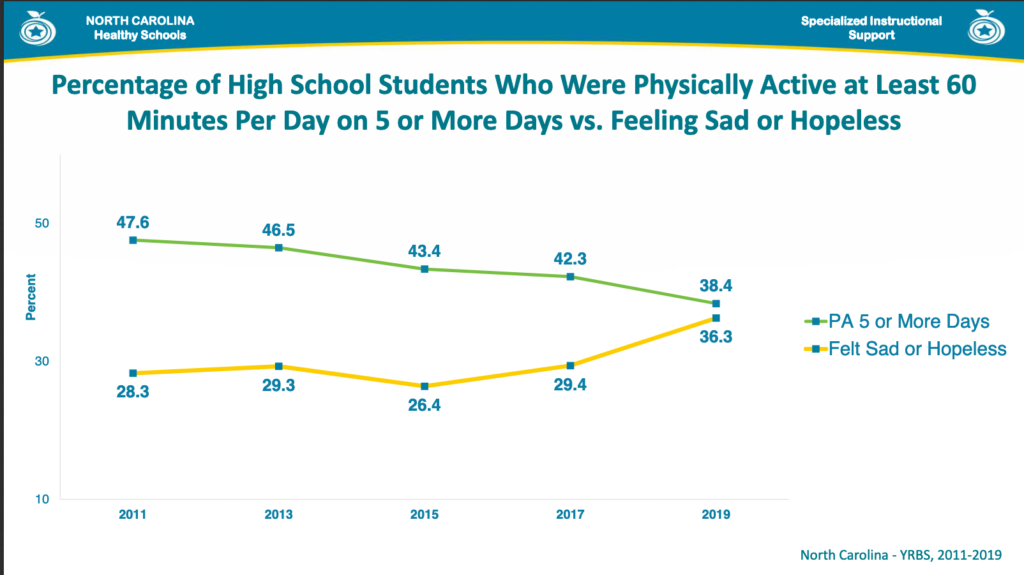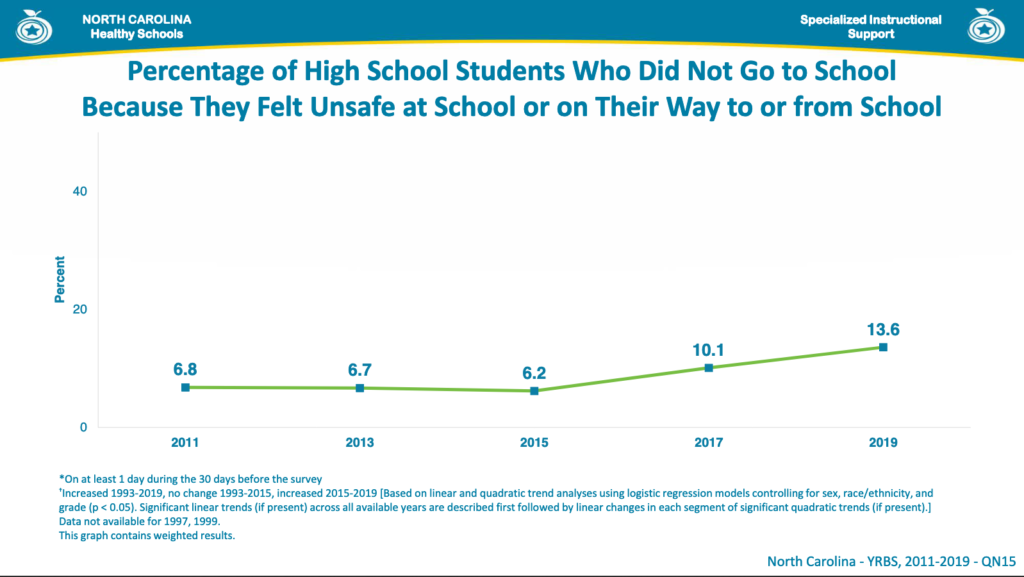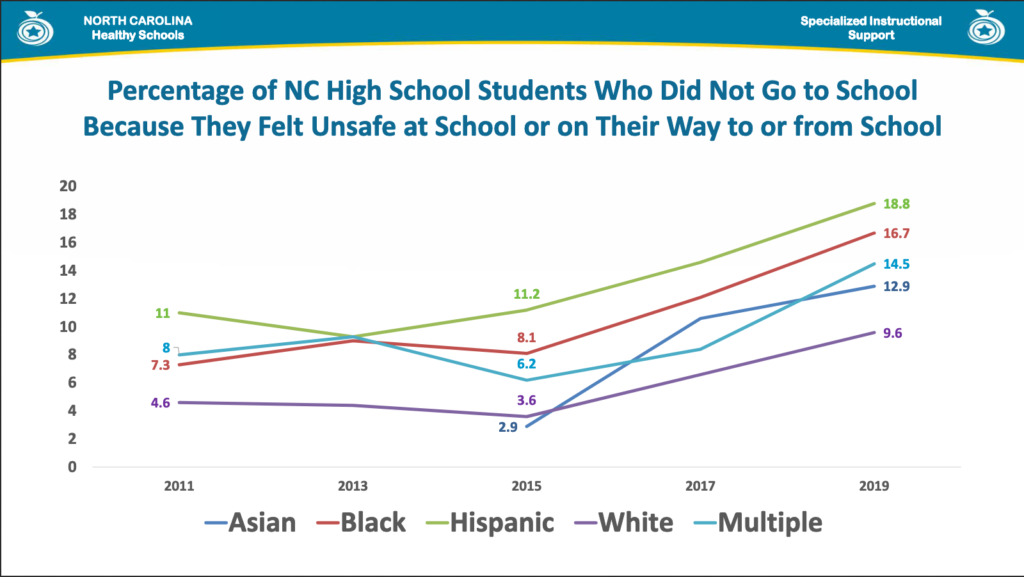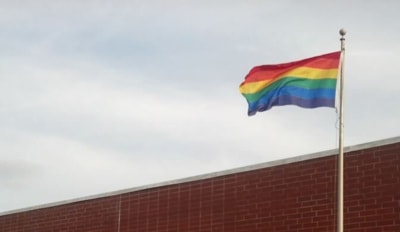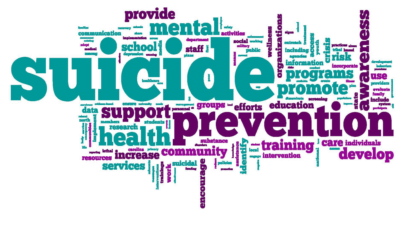On Tuesday, the State Board of Education heard about increasing rates of attempted suicide, depression, and other mental health risk factors among the state’s high school students.
The data are from the latest youth risk behavior survey, taken in 2019 before the COVID-19 pandemic. The state has conducted the survey every other year since 1993.
The Board discussed the 2019 results on the first day of a two-day strategic planning meeting. The presentation came amid renewed attention to youth suicide, which is the second-leading cause of death among teenagers nationally.
In North Carolina, the sampling showed high school students are at greater risk of self-harm, suicidal ideation, depression, and bullying.
“I think we rightly and often say we care most about those who have the least, which is our children,” State Board Vice Chair Alan Duncan said. “We want to say that’s who we are. But these numbers would suggest it’s not who we are. And as a state, it’s not what we’re doing.”
Board member Jill Camnitz said she is worried these trends might have worsened since the survey was conducted last year.
“I can’t help but think about what these numbers would look like if we could sample those same kids right now,” Camnitz said, referring to students’ struggles during COVID-19. “It just adds urgency to our need to get these kids back to school.”
Survey of 3,000 high schoolers shows increase in suicide risk
The state surveyed middle and high school students to gather data on youth risk behaviors, such as suicide, bullying, and substance abuse.
The Board heard data from the 2019 survey of 3,056 high school students. The demographics of the respondents nearly mirrored statewide student demographics, said Ellen Essick, specialized instructional support and Healthy Schools section chief for the state Department of Public Instruction (DPI).
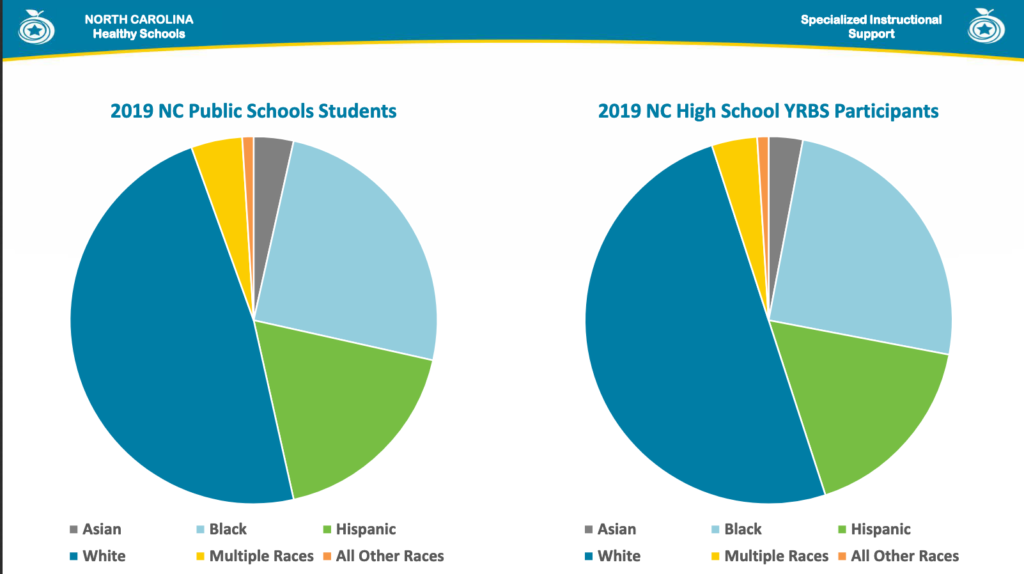
High school students in the survey reported more suicide attempts and suicidal ideation. In the year before taking the survey, 19% of students seriously considered attempting suicide, they said, and 10% attempted it. That former number had dropped slightly from 2013 to 2017, before a 3% increase in 2019.
LGBTQ students are about three times as likely to have suicidal ideation or attempt suicide, the survey showed. Among this group, 44% said they seriously considered attempting suicide and 22% actually attempted it.
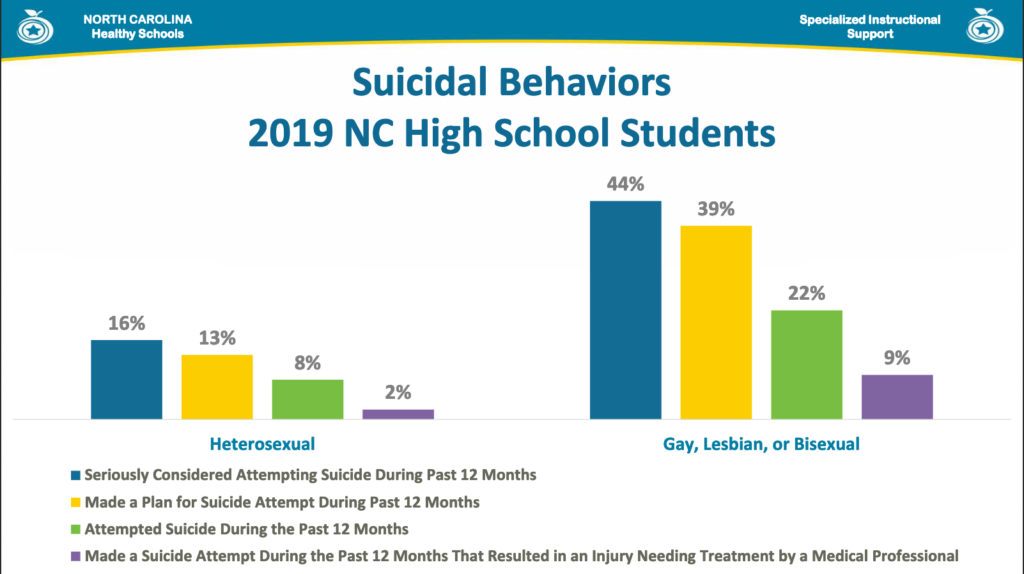
Students also reported feeling more alone, sad or hopeless, and less good about themselves. These data points inform policymakers on student depression.
The data show a correlation between physical activity and feelings of sadness and hopelessness, though they were not designed to determine causation.
To assess bullying, the survey asked students whether they decided not to attend school because they felt unsafe traveling to, attending, or coming home from school.
On this question, 13.6% of students said they felt unsafe, a 3.5% increase from 2017. Every demographic reported greater concern over safety than two years earlier, with Hispanic and Black students reporting the highest rates. Asian students reported the steepest increase over the last four years, up 10 percentage points since 2015.
Survey results showed a decrease in cigarette usage and an increase in vaping. Finally, they suggested fewer students were eating breakfast.
Board emphasizes importance of hiring more mental health professionals
One recommendation from the survey analysis is to create positions for state-level mental health leaders, such as a Chief Health Officer and regional mental health consultants. The survey results also highlight the need for more mental health professionals in schools, Essick said.
These professionals, she said, are:
- School counselors. Essick said the national recommended ratio of school counselors to students is 1 to 250. In North Carolina, the ratio is 1 to 353.
- School social workers. The national recommended ratio for social workers is 1 to 250. In North Carolina, it’s 1 to 1,289.
- School psychologists. The national recommended ratio of school psychologists is 1 to 500. In North Carolina, it’s 1 to 1,798.
- School nurses. The national recommended ratio of school nurses is 1 to 750, or at least one per school. In North Carolina, it’s 1 to 1,007.
“We’re not meeting our ratios at this point,” Essick said, adding that “we can’t just advocate for funding for any one position; we have to look at them as a collective.”
Approach to new legal mandate for mental health plans
Matt Hoskins and Lauren Holahan from DPI’s Exceptional Children Division presented on school-based mental health plans as a way to start addressing some of the youth risk behavior.
Senate Bill 476 was passed in May and requires suicide prevention training and a risk referral protocol in schools. It also requires a school-based mental health plan and training for educators. This would cover things like mental health, suicide prevention, substance abuse, sexual abuse and trafficking prevention, and teenage dating violence.
“What we know is the mental health needs of our students are increasing,” Hoskins said.
He suggested the survey data could be even worse today. He referred to a Journal of the American Medical Association article from last month showing a three-fold increase in adult depression during the COVID-19 pandemic, and he said preliminary studies show similar increases for youth.
The school mental health initiative policy, which the Board would need to vote on, would call for:
- universal prevention through core instruction, curriculum, and environment;
- early intervention for mental and social-emotional needs;
- referral, treatment, and re-entry planning.
A suicide risk referral protocol would require DPI to create a monitoring process, where the risk referral is reported and the state tracks what happens afterward.
A school mental health training program would be free to all teachers and occur every couple years. It would include child abuse and sex trafficking prevention components.
The policy would require investing $45 million in recurring costs, including $15.75 million toward personnel — the largest allotment of which would go to the school counselors, social workers, psychologists, and nurses.
